Choosing a corner heated towel rail in the bathroom
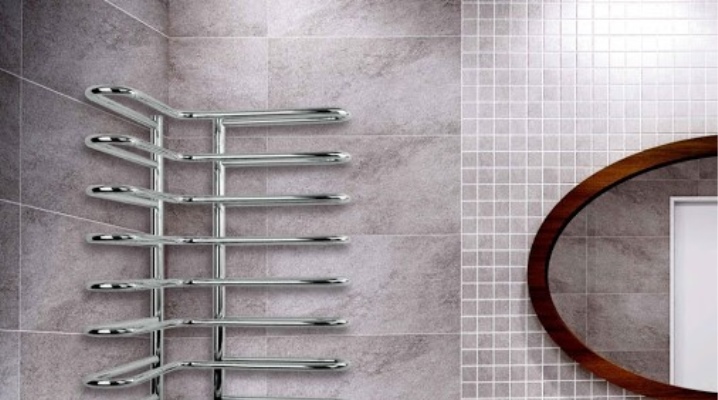
In a small bathroom, it is important to use space as efficiently as possible. To do this, you need to choose the right size and shape for a bath, a sink, cabinets and a heated towel rail. A coil is needed in every bathroom: with its help it is convenient to dry damp textiles, as well as to maintain a comfortable temperature in the room. Corner models will help save space and relieve space. They are produced from different materials, they are water and electric. Let's figure out what to consider when choosing such equipment.
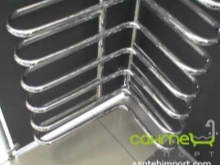
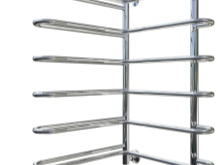

Design features
The corner heated towel rail is designed for installation in an internal or external corner of the room (the location depends on the model). Most of these drying devices are ladders, the links of which are located at an angle of 90 degrees relative to each other.
The advantages of corner structures:
- the possibility of maximum saving of free space in a small room;
- a large selection of models: from small budgetary ones to large solutions with a set of additional functions;
- a wide range of design solutions, due to which you can choose an option for your interior;
- reliability and durability of the product with its correct choice;
- simple installation.

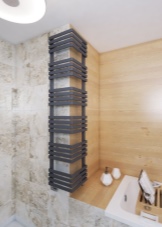
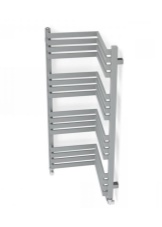
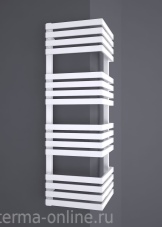
The disadvantages include the higher cost of corner structures compared to traditional coils.
Views
Corner heated towel rails are divided into 2 large groups. They are water and electric. The first ones are reassigned to be connected to the heating system (in private houses, cottages) or to the hot water supply (in apartments). A water heated towel rail is inexpensive, however, before you start using it, the device will need to be "embedded" into the heating system: this will require knowledge, tools and free time. Such a drying device will not heat up when hot water is turned off (for example, during repair or maintenance work): this is its main disadvantage.
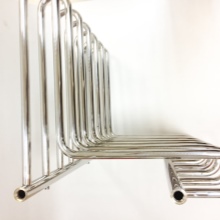
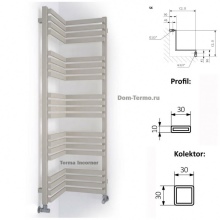
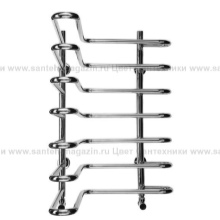
Electric corner heated towel rails are mobile. They depend on electricity and operate on a 220V household outlet. Such models are floor-standing or hanging. Floor-standing models can be easily moved from one room to another, if necessary. Unlike a conventional radiator, electric heated towel rails have additional protection against electric shock, so that they can be safely used in rooms with high humidity. A significant disadvantage of such radiators is a higher price compared to classic water models.
The sizes of both drying devices are varied: manufacturers offer both compact models and overall ones for spacious rooms. Products can be narrow with a width of 30 cm or wide 50 cm. The height is also different: there are models for sale with a height of 40 cm to one and a half meters. Devices can be equipped with shelves, hooks, power regulators (electric models).

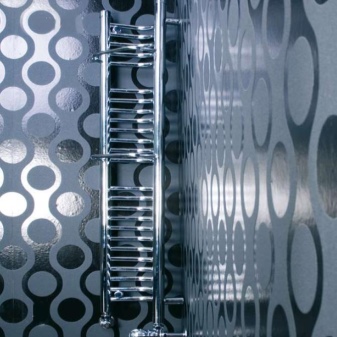
Manufacturing materials
Corner heated towel rails can be made from different materials, each of which has its own characteristics. Low-cost options are made of black steel. Such devices are short-lived because they are susceptible to corrosion. Steel water dryers are not recommended for use in apartments, as there are frequent pressure drops in the heating system and hot water supply.
Stainless steel is the most popular material in the manufacture of heated towel rails. It is characterized by increased strength, resistance to water hammer and sudden pressure drops in the system. Thanks to the internal anti-corrosion coating, the pipes perfectly resist rusting and are suitable for water of any composition. Stainless steel heated towel rails are inexpensive and attractive in appearance: products can be chrome-plated, imitate non-ferrous metals.
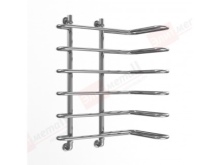


The disadvantages of stainless steel devices include weight, however, the greater the mass, the better heat transfer the device will have.
More expensive corner heated towel rails are made of copper and brass. Copper conducts heat well. Plumbing products made of this non-ferrous metal are less durable than steel models, but at the same time they carry loads well.
Brass is weaker than copper. It does not tolerate hydraulic shocks well, which is why it is not recommended to use brass heated towel rails in apartments. An exception is private houses, in which there are no pressure surges in the heating system, and there is a small internal load.
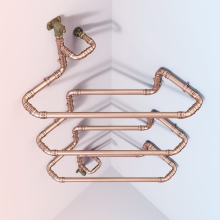
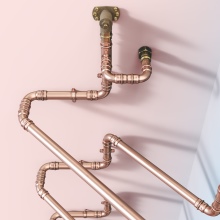
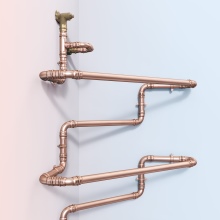
How to choose?
First of all, you need to decide on the type of heated towel rail: water or electric. If there are frequent interruptions in the GVO system, it is advisable to take a closer look at the stand-alone 220 V models. You can choose a combined device that can operate in 2 modes. If a water dryer is preferred, it is important that it is protected against corrosion. Products with an anti-corrosion coating are suitable for any water composition, they will not fail in the next few years and will retain their aesthetics despite difficult operating conditions.
When choosing, you should also consider the following criteria.
- Material. Experienced plumbers recommend stainless steel models. It should be borne in mind that the wall thickness of the device should not be less than 3 mm. It is best to choose products that do not have welded seams, since such joints significantly reduce the strength of the structure.
- Placement method. Indoor and outdoor corner heated towel rails are equally effective in saving space. When choosing a type for this parameter, you need to take into account the layout of the bathroom and your personal preferences.
- Product dimensions. Most often, products are selected in accordance with the area of the room. If it is small, it is better to choose compact models, and for a spacious one, look for an overall solution.

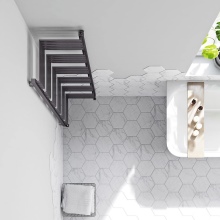
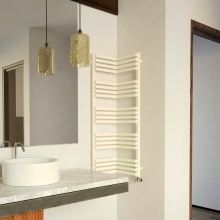
When choosing a heated towel rail, consider the reputation of the manufacturer, the appearance of the device, and its technical characteristics.
How to choose a corner heated towel rail in the bathroom, see the video below.













The comment was sent successfully.